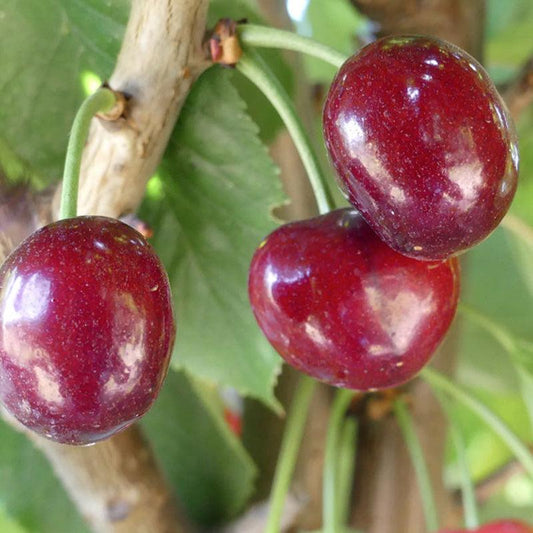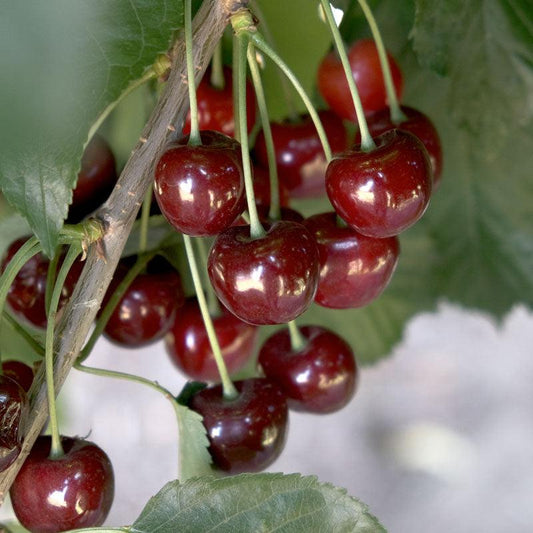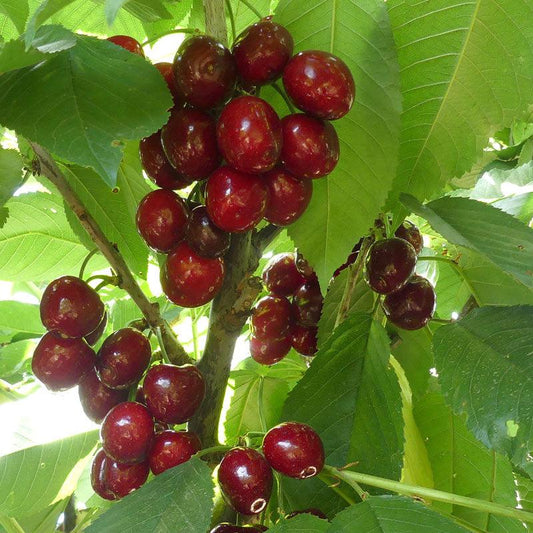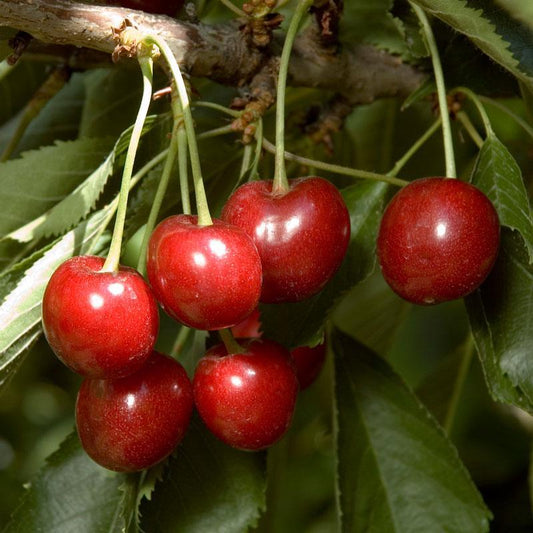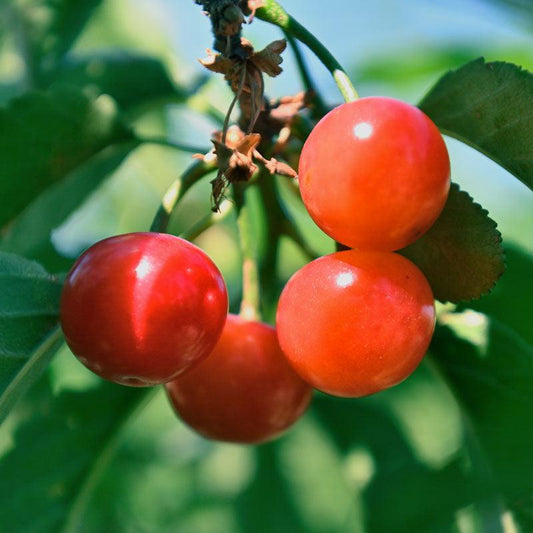Cherry Season Guide: When Are Cherries in Season and How to Grow Your Own
Cherries are one of the most anticipated fruits of summer. Their juicy sweetness, vibrant color, and versatility make them a seasonal favorite for snacking, baking, and preserving. If you’ve ever asked yourself “when is cherry season” or “when are cherries in season near me?”, this guide explains everything you need to know about timing, varieties, and how to enjoy the best of the harvest.

When Are Cherries in Season in the United States?
If you’re wondering when cherry season USA peaks, it depends on the region and variety of cherry. In the United States, cherry season runs from late spring to mid August, with the peak harvest usually falling around mid June. The timing depends on climate and location:
- Southern & Western U.S. (Cherry Season California): In California, cherries can appear as early as late April, with peak harvest in May and June. California’s warm climate allows the earliest cherry crop in the country.
- Pacific Northwest: Washington and Oregon are famous for their dark sweet cherries. Their cooler climate extends the cherry fruiting season into July.
- Midwestern U.S.: Michigan dominates the market for tart cherries. Harvest typically takes place from late June through July, making it prime cherry picking season in the Midwest.
- Northeastern U.S.: Cooler states like New York ripen later, often from late June to early August.
If you’re wondering “when do cherries come in season where I live?”, check your growing zone for the best local guidance.

Cherry Tree Varieties and Their Seasons
Different types of cherry ripen at different times:
Sweet Cherry Tree Varieties
- Bing Cherry Tree: Early-ripening and one of the most popular choices for fresh cherries.
- Rainier Cherry Tree: Yellow-red, delicate, and very sweet, ripening mid June.
- Lapins Cherry Tree: Late-season, large fruit with firm texture.
- Utah Giant Cherry Trees: Excellent for extending the growing season into July.
- Tart (Sour) Cherries
- Montmorency Cherry: The classic pie cherry, usually harvested late June through July.
- ‘Balaton’: A robust, late-ripening cherry often used for preserves.
Both sweet and sour cherries are staples at cherry orchards across the country during peak season.

Cherry Picking and Peak Harvest
When is cherry picking season? For most regions, picking begins in late May and continues until mid August, with the peak usually around mid June. Cherries are in season for a short window, so visiting a local cherry orchard during peak harvest ensures the best flavor.
Remember: cherries do not ripen after picking. Harvest them when they are fully colored, plump, and firm for the best taste.
Growing Your Own Cherry Trees
Planting your own cherry trees allows you to enjoy fresh fruit straight from the garden. Here are some essentials:
- Choose the Right Variety: Explore bare root cherry trees or semi-dwarf cherry trees. You can also plant peach, plum, or apricot trees for a diverse orchard.
- Fertilizing and Pruning: Learn when and how to fertilize your fruit trees and see our video on pruning cherry trees.
- Weather Conditions: Sudden frosts can damage blossoms. Protect trees with frost protection.
- Pest and Bird Control: Use bird netting, repellents, and other methods to protect your crop.
For a unique project, try growing cherries from seed.

Extending and Preserving the Season
Extend the cherry fruiting season by planting early, mid, and late-ripening varieties. This lets you harvest continuously for several weeks.
After harvest:
- Refrigerate: Keeps cherries fresh for up to a week.
- Freeze: Frozen cherries are excellent for smoothies or baking.
- Dry or Can: Dried cherries and preserved fruit are ideal for snacks and recipes like cherry pie.
The Beauty of Cherry Blossoms

Before fruit forms, cherry blossom displays mark the beginning of the season. Gardeners who care for ornamental cherry blossom trees know the blooms signal the coming harvest. Proper pruning ensures both healthy blossoms and a productive cherry crop.
Final Thoughts
If you’ve ever wondered “when is cherry season” or “when do cherries come in season,” the answer depends on location, climate, and variety. Generally, cherries are in season from late May through mid August, with the sweetest harvests around mid June.
Whether you’re visiting a local cherry orchard or planting your own bare root cherry trees, timing is key to enjoying the juiciest cherries. Start planning today and enjoy a harvest that makes summer truly sweet.
FAQs About Cherry Season
When is cherry season?
When cherries in season in California?
Are cherries in season in July?
Can cherries grow in my area?
What’s the difference between sweet and tart cherries?
How can I extend my cherry harvest?
Can I use cherries after the season ends?
Resource Area: Growing and Enjoying Cherries
To make the most of cherry season, whether you’re planning to grow your own cherries or simply looking to enhance your harvest, these expert resources will help guide you every step of the way.
-
Growing Cherries from Seed: Tips for Success
- Learn the ins and outs of growing cherries from seed, including important tips for success and the best conditions to help your cherry trees thrive.
-
Lapins Cherry Trees for Sale
- Consider planting ‘Lapins’ cherries, a self-fertile, sweet variety that produces large, delicious fruit. Check out this selection to add this fantastic variety to your garden.
-
Can I Prune My Flowering Cherry Tree? Essential Tips for Gardeners
- Proper pruning is crucial for the health and productivity of your cherry tree. This guide covers essential tips on when and how to prune your flowering cherry tree.
-
Pruning Cherry Trees and Pruning Apricot Trees (Video)
- Watch a step-by-step video tutorial on how to properly prune your cherry trees for maximum fruit production and tree health.
-
Bare-Root Cherry Trees for Sale
- Start your cherry-growing journey with bare-root cherry trees, ideal for gardeners who want to plant young trees in the right environment for optimal growth.


